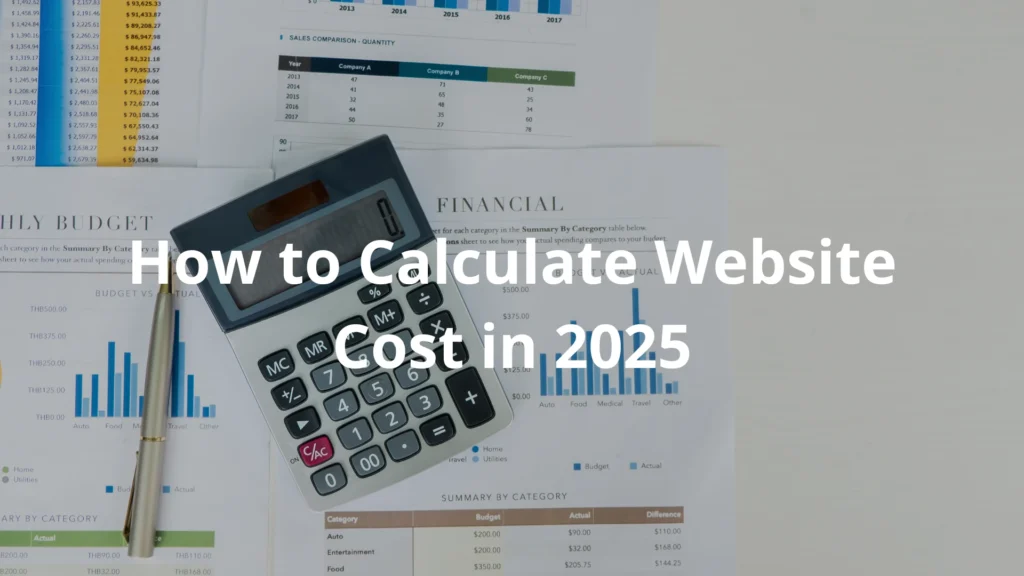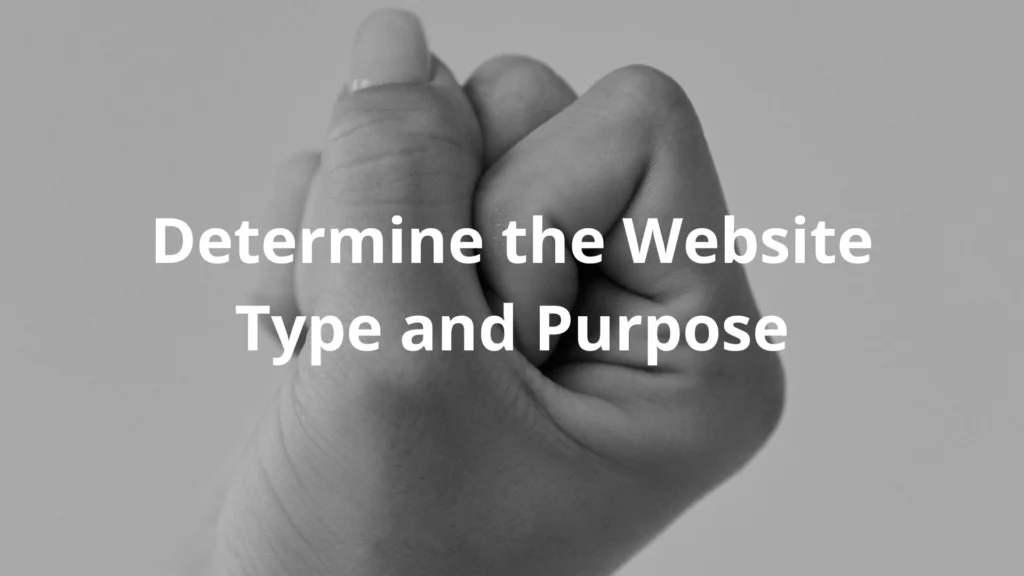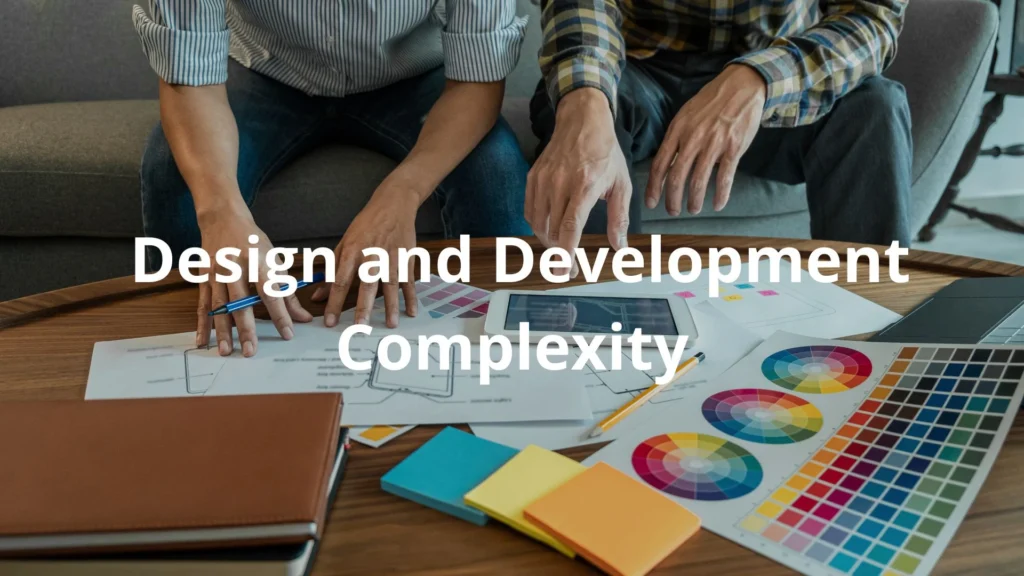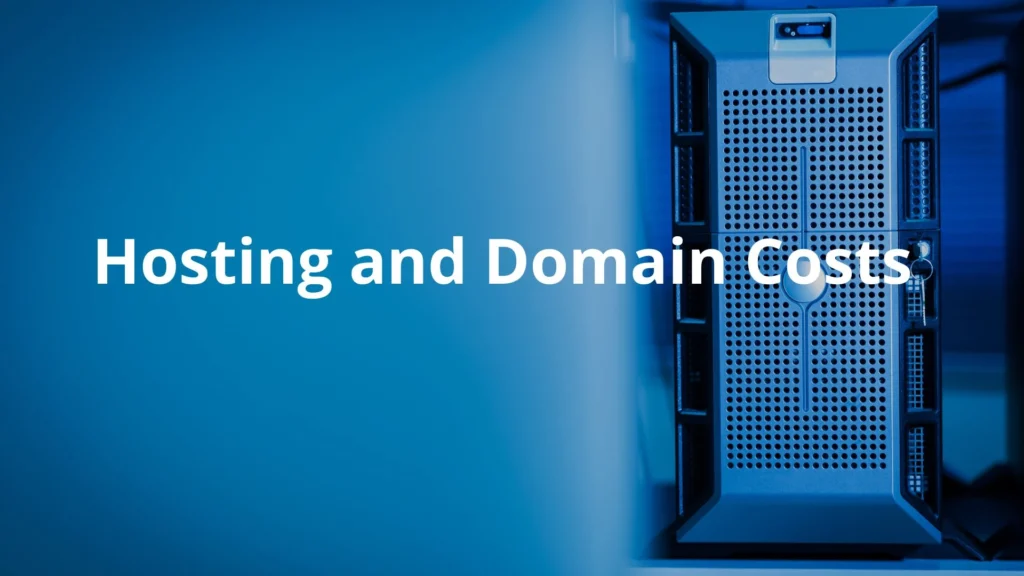
Introduction
As the digital world continues to evolve at an unprecedented pace, having a well-designed, functional website is crucial for businesses of all sizes. Whether you’re a startup, a small business owner, or a large enterprise, your website is your digital storefront — often being the first point of contact between you and potential customers. With 2025 fast approaching, the importance of creating an engaging, user-friendly, and responsive website has only grown.
However, one of the most common questions businesses have when embarking on a website project is, “How much will it cost?” The truth is, the cost of building a website can vary greatly depending on several factors such as the website’s purpose, design complexity, functionality, and ongoing maintenance needs. In 2025, technological advancements, new web design trends, and a range of third-party integrations will further influence pricing.
This blog post will guide you through the various factors to consider when calculating the cost of a website in 2025. From the initial planning stages to post-launch support, understanding the components that contribute to website pricing will help you budget effectively and ensure that you’re investing in a website that meets your business goals.
1. Determine the Website Type and Purpose
The first step in calculating the cost of a website is determining its type and purpose. Websites come in various forms, each with its own set of requirements and features that can impact pricing. The complexity of the website’s functionality, its design, and the audience it serves will play a major role in cost determination.

Personal vs. Business Websites
A personal website, such as a blog or portfolio, is typically simpler and less expensive than a business website. Personal websites may consist of a few pages and require less functionality, which can be achieved using affordable pre-built templates. On the other hand, business websites tend to involve more complex design elements, content strategies, and branding considerations. They may also need specific features such as lead generation forms, customer support chatbots, or interactive elements, all of which contribute to a higher cost.
E-commerce Websites
E-commerce websites are among the most complex and expensive types to build. These websites require integration with payment gateways, secure checkout systems, and product catalogs that must be regularly updated. Additionally, e-commerce websites often need custom features such as user accounts, order tracking, inventory management, and customer reviews, which all add to the overall cost.
Portfolio and Blogs
A portfolio or blog website typically requires fewer resources and functionalities, which lowers the overall price. However, if you’re looking to create a portfolio with advanced features such as video backgrounds, animations, or interactive galleries, the cost can rise. Blogs, while usually simpler, may need ongoing content creation, SEO optimization, and maintenance that should also be factored into the cost.
Corporate/Enterprise Websites
For larger companies or enterprises, websites are often multifaceted and need advanced features like customer portals, integrated CRM or ERP systems, complex content management, and scalable infrastructure. These features require significant investment in development, security, and testing to ensure that the website can handle high traffic volumes and data processing.
2. Design and Development Complexity
The design and development complexity of a website significantly impacts the overall cost. The more intricate and customized your website is, the higher the cost will be. The two primary components that determine complexity are the design and development aspects of the site.

Template vs. Custom Design
Websites can either be built using pre-designed templates or custom-designed from scratch. Template-based designs are cheaper and quicker to implement, but they may lack uniqueness and flexibility. On the other hand, a custom-designed website offers a unique look and feel that aligns perfectly with your brand, but it comes at a higher price due to the time and effort involved in creating a bespoke design.
UI/UX Design
User Interface (UI) and User Experience (UX) design are critical elements of modern websites. UI refers to the visual aspects of the website, such as layout, colors, fonts, and images, while UX focuses on how users interact with the website. A website with superior UI/UX design offers a seamless and enjoyable experience for visitors, encouraging them to stay longer and engage with your content. Investing in high-quality UI/UX design will undoubtedly increase costs but is essential for building an effective website that drives conversions.
Responsive Design
With the growing use of mobile devices, responsive design — ensuring your website looks and works well on all screen sizes — is no longer optional. Developing a responsive website requires additional design and development work to adapt content, images, and functionality to fit different screen sizes. This added work will contribute to the overall cost of the website.
Advanced Features and Integrations
Custom features such as live chat, booking systems, social media integrations, and membership areas can increase the complexity of a website. For e-commerce sites, custom product filtering options, payment gateway integrations, and personalized recommendation engines require additional development effort, driving up the cost.
3. Website Size and Content
Another critical factor in calculating website cost is the size and content of the website. The larger and more content-rich the website is, the more time and resources will be required for its development.

Number of Pages
The more pages your website has, the higher the cost will be. A simple website with only a few pages will cost significantly less than a large, multi-page website. Each page requires design, development, and content input, which adds to the overall cost. Additionally, websites with more pages often need more robust content management systems (CMS), which may also increase costs.
Content Complexity
Websites with complex content, such as blogs, news articles, videos, or interactive elements, require additional development and design work. This type of content also needs to be optimized for SEO to ensure good visibility in search engines, which requires the work of content creators, SEO experts, and developers.
SEO Optimization
SEO optimization from the start ensures that your website ranks well on search engines and drives organic traffic. SEO involves keyword research, on-page optimization, meta tags, and other content-related strategies, which require additional time and expertise. While SEO is a long-term investment, it will add to the upfront cost of website development.
4. Technology and Platform Choice
The technology stack and platform you choose for your website play a significant role in its overall cost. Different technologies and platforms offer varying levels of functionality, customization, and scalability, all of which influence pricing.

CMS Platforms
A website built on a content management system (CMS) like WordPress, Joomla, or Drupal can be more cost-effective than a custom-built website because these platforms are pre-designed and come with a variety of built-in functionalities. However, customizing these platforms and adding advanced features can increase costs. Custom CMS solutions, while offering more flexibility and control, require more time and expertise to develop, leading to a higher price tag.
E-commerce Platforms
For an e-commerce website, the choice of platform is crucial. Popular platforms like Shopify, WooCommerce, and Magento offer different pricing structures depending on the complexity of the site. For example, Shopify is generally easier and cheaper to set up, but it may not have the same level of flexibility and customization as WooCommerce or Magento. Custom-built e-commerce websites, which offer tailored solutions, often come with higher development costs.
Web Frameworks
Some websites require custom-built solutions using advanced web frameworks like React, Angular, or Django. While these frameworks allow for highly interactive and dynamic websites, they also require more development time and technical expertise, which increases costs.
Mobile Application Integration
If your website needs to integrate with a mobile application, the development cost can rise significantly. Developing APIs and ensuring seamless synchronization between your website and mobile app requires additional resources and time.
5. Hosting and Domain Costs
The hosting and domain registration are recurring costs that should be factored into the total website budget. These costs are generally more affordable than development and design but can still add up over time.

Domain Registration
The domain name is your website’s address on the internet. The cost of domain registration can vary depending on the domain’s popularity and availability. Premium domain names (short, catchy, or industry-specific names) can be more expensive, whereas a standard domain typically costs between $10 and $20 per year.
Web Hosting
Web hosting costs depend on the type of hosting plan you choose. Shared hosting is the cheapest option, but it may not be sufficient for larger websites that receive a lot of traffic. Dedicated hosting, where your website gets its own server, is more expensive but offers better performance, security, and scalability. For large-scale businesses, cloud hosting or enterprise-level hosting solutions may be required, which significantly increases hosting costs.
SSL Certificates
SSL certificates are essential for securing your website and protecting user data, especially for e-commerce sites. An SSL certificate encrypts data transmitted between the website and the user’s browser, ensuring privacy and security. Depending on the level of encryption and the hosting provider, SSL certificates can cost anywhere from $10 to several hundred dollars per year.
6. Content Management and Maintenance
A website requires ongoing maintenance and updates to ensure it remains secure, functional, and up-to-date with new features and content. This ongoing maintenance can add to the long-term costs of owning a website.

CMS Customization
While a CMS like WordPress can make it easy to manage website content, customizing the CMS to fit your business needs or adding unique features will require additional resources and expertise.
Ongoing Maintenance
Websites need regular updates to ensure they remain secure and compatible with new technologies. Maintenance includes software updates, plugin updates, and addressing security vulnerabilities. Some web development companies offer ongoing maintenance packages, which can add an additional cost to your website’s budget.
Content Updates
If your website needs frequent content changes (such as adding new blog posts, product listings, or portfolio items), you may need to allocate budget
for content creation and updates. Alternatively, you can use a CMS that allows you to easily update content without requiring developer assistance.
Conclusion
Calculating the cost of building a website in 2025 involves multiple considerations, ranging from design and development complexity to technology stack and ongoing maintenance needs. While the initial development cost may seem daunting, it’s important to remember that a website is a long-term investment that can yield significant returns through improved customer engagement, brand presence, and sales.
By understanding the factors that influence website costs, you can make more informed decisions when working with a web development company and ensure that you’re getting the best value for your money. Whether you need a simple blog or a complex e-commerce platform, the key is to find a solution that aligns with your business goals, offers scalability for future growth, and fits within your budget.
In 2025, as technology continues to evolve, the costs of building and maintaining websites will continue to fluctuate. Therefore, being well-prepared with a clear understanding of your requirements and budget will help ensure that your website not only looks great but functions effectively and serves your business needs for years to come.